<< Previous | Displaying results 126-150 of 506 for "austria" | Next >>
Members of the League of German Girls wave Nazi flags in support of the German annexation of Austria. Vienna, Austria, March 1938.
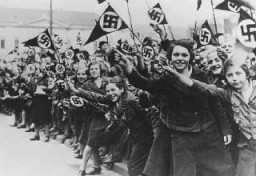
A streetcar decorated with swastikas passes billboards displaying Hitler's face. The billboards urge Austrians to vote "Ja" (Yes) in the upcoming plebiscite on the German annexation of Austria. Vienna, Austria, April 1938.
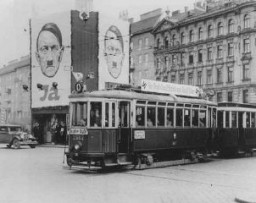
Corpses found by US soldiers after the liberation of the Gunskirchen camp, a subcamp of the Mauthausen concentration camp. Austria, after May 5, 1945.
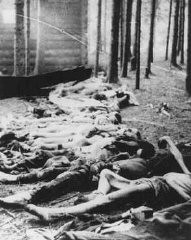
Survivors of the Ebensee subcamp of the Mauthausen concentration camp. Ebensee, Austria, May 8, 1945.
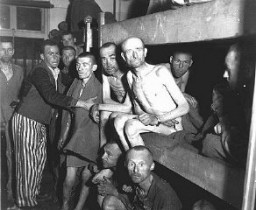
SS chief Heinrich Himmler leads an inspection of the Mauthausen concentration camp. Austria, April 27, 1941.
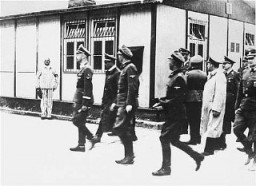
Prisoners at forced labor in the quarry of the Mauthausen concentration camp. Austria, date uncertain.
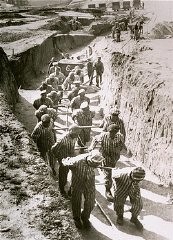
SS officers posing in front of a newly arrived transport of Soviet prisoners of war. Mauthausen concentration camp, Austria, 1941.
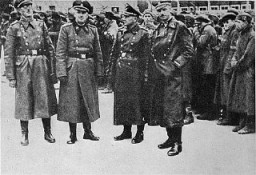

Soviet prisoners of war in the Mauthausen concentration camp. Austria, January 1942.
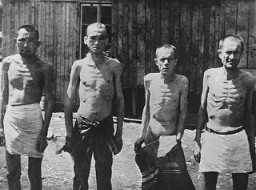
Hilda Rattner (born Hilda Wiener ) was born into a Jewish family in Vienna on June 14, 1904. Not long after her birth, Hilda’s parents realized that she was deaf. Two years later, their fourth child, Richard, was born, and he was also deaf. Vienna in particular had a very vibrant deaf community where Jews and non-Jews mixed freely. Hilda and her brother Richard attended a Jewish school, where they learned to sign, and it was through these associations and activities that Hilda met Isadore Rattner, a…
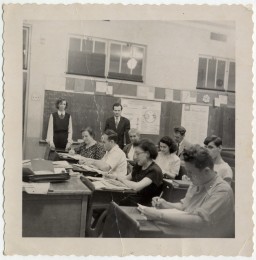
March 14, 1938. On this date, Helen Baker documented what she witnessed when Germany annexed Austria. Helen and her husband Ross Baker were Americans living in Vienna.
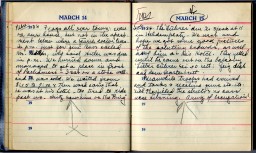
Read about the experiences of Jews who were living in Vienna during the German annexation of Austria.
US forces under the command of General Omar Bradley reached the Ebensee forced-labor camp in Austria in early May 1945. The Germans had built Ebensee at the foot of the Austrian Alps as part of the Mauthausen system of camps. The Nazis employed Ebensee prisoners as forced laborers during the construction of an underground rocket factory. Thousands died from the harsh conditions and back-breaking labor.
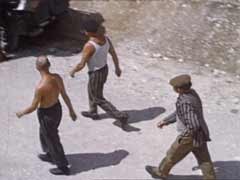
A man and his son, displaced persons (DPs) from Romania, wait on a cot in the Rothschild Hospital displaced persons camp in Vienna. Austria, October 15, 1947.

A US soldier looks at the Mauthausen crematorium during the liberation of the camp. Austria, May 1945.
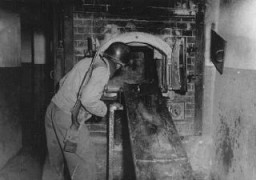
SS chief Heinrich Himmler (front row, left) and Mauthausen commandant Franz Ziereis (second from left) inspect inspect the Wiener Graben quarry during an official tour of the Mauthausen concentration camp. Austria, April 27, 1941.
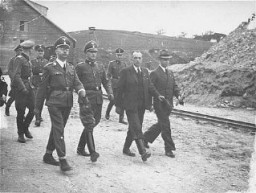
June 4, 1945. On this date, Earl G. Harrison toured displaced persons camps and wrote of his impressions of Linz, Austria.
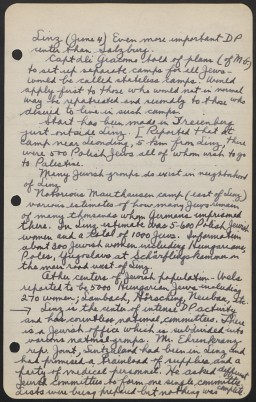
Nazi Germany annexed Austria in March 1938. Learn about Austria’s capital, Vienna, which at the time was home to a large and vibrant Jewish community.
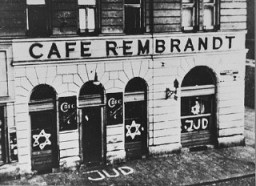
Nazi Germany occupied Hungary in March 1944. Learn about the experiences and fate of Jews in Budapest, Hungary's capital, before and after the occupation.

Learn more about the plight of Jewish refugees who attempted to escape Germany between 1933 and 1939.

Adolf Eichmann was a key figure in implementing the “Final Solution,” the Nazi plan to kill Europe's Jews. Learn more through key dates and events.
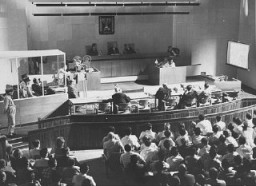
The 71st Infantry Division participated in major WWII campaigns and is recognized for liberating the Gunskirchen subcamp of Mauthausen in 1945.
Brihah was a postwar, clandestine movement that helped Jews emigrate from eastern Europe into the Allied-occupied zones and Palestine or Israel. Learn more.
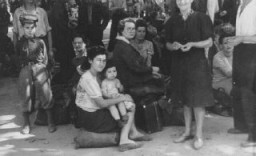
We would like to thank Crown Family Philanthropies, Abe and Ida Cooper Foundation, the Claims Conference, EVZ, and BMF for supporting the ongoing work to create content and resources for the Holocaust Encyclopedia. View the list of donor acknowledgement.